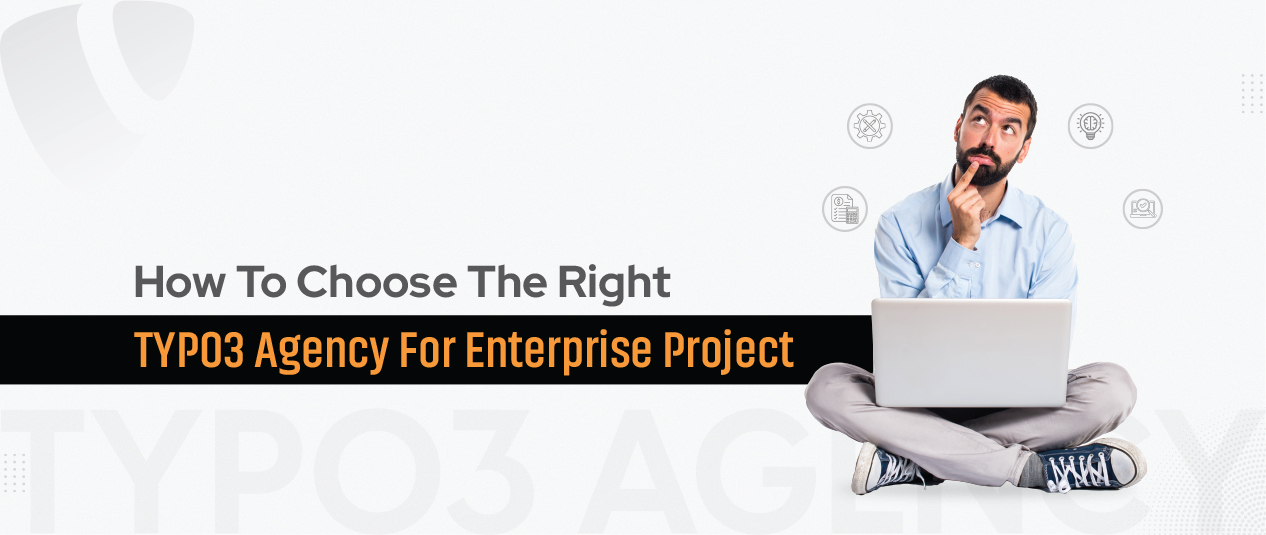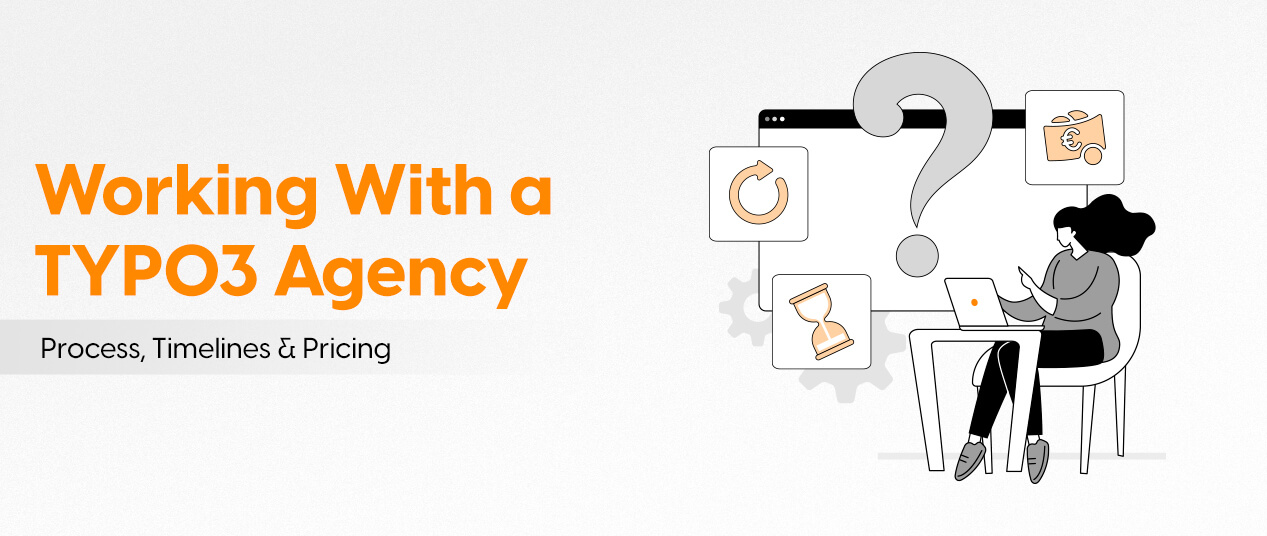Online presence of business regardless of industry will have a big impact on its success. In this digital age, many businesses still don’t realize that a majority of their customers can visit their website before deciding to make a purchase. Having a well built online presence specially a website can also help in generating more revenue. And "YES" quality of the website impacts the results. TYPO3 Development a website for your business can also propel your business to new heights.
Before choosing the best TYPO3 Agency for your business for your enterprise you should know everything about that website. Therefore in this blog we will explore how NITSAN kick off TYPO3 projects for enterprises
Brief Overview of TYPO3 CMS
TYPO3, an open-source content management system, empowers enterprises with a flexible and robust platform for creating and managing digital content. Its scalability, customization capabilities, and extensive community support make it an ideal choice for large-scale projects.
Understanding Enterprise TYPO3 Company Needs
Conducting Thorough Requirements Analysis:
The foundation of any successful TYPO3 project lies in understanding the specific requirements of the enterprise. This involves engaging stakeholders, identifying pain points, and aligning TYPO3 functionalities with business goals.
Identifying Key Expectations:
Pinpointing the key expectations ensures that the TYPO3 solution is crafted to address the enterprise's unique challenges. This step involves collaboration between developers and stakeholders to create a TYPO3 roadmap for project success.
Tailoring TYPO3 Solutions to Meet Specific Enterprise Goals:
Customization is key in adapting TYPO3 to meet the distinct requirements of an enterprise. This includes tailoring features, user interfaces, and functionalities to align seamlessly with the organization's objectives.
Project Planning and Scope Definition
Defining Project Scope and Objectives:
Clearly outlining project scope and objectives is crucial for project success. This step involves setting realistic expectations, establishing deliverables, and ensuring alignment with the enterprise's overarching goals.
Creating a Realistic Timeline for the TYPO3 Project:
Developing a well-thought-out timeline helps manage expectations and ensures a smooth project flow. It involves breaking down the project into manageable phases, setting milestones, and accounting for potential challenges.
Establishing Clear Communication Channels
Emphasizing the Role of Effective Communication:
Clear communication is the backbone of project success. Establishing transparent communication channels between team members, stakeholders, and developers fosters collaboration and helps mitigate misunderstandings.
Customization and Integration
- Adapting TYPO3 to Fit the Enterprise's Unique Requirements: Customization goes beyond aesthetics; it's about tailoring TYPO3 to the specific needs of the enterprise. This step involves adapting functionalities, workflows, and interfaces to create a personalized solution.
- Integrating TYPO3 Seamlessly with Existing Systems: Integration is vital for a cohesive digital ecosystem. Ensuring that TYPO3 seamlessly integrates with existing systems enhances efficiency and streamlines processes across the enterprise.
- Ensuring Scalability and Future-Proofing the Solution: Future-proofing involves designing the TYPO3 solution with scalability in mind. This step anticipates the growth of the enterprise, ensuring that the TYPO3 platform can evolve alongside changing business needs.
Training and Knowledge Transfer
Providing Comprehensive Training for Team Members:
Investing in comprehensive TYPO3 training for team members ensures a smooth transition to the new TYPO3 solution. This includes hands-on training sessions, workshops, and resources to empower users.
Ensuring Knowledge Transfer for Sustainable TYPO3 Management:
Knowledge transfer is vital for the sustainable management of TYPO3. Establishing documentation, knowledge-sharing platforms, and mentorship programs helps retain expertise within the enterprise.
Addressing Potential Challenges in the Learning Curve:
Anticipating challenges in the learning curve is essential. Proactive support, user-friendly interfaces, and ongoing training initiatives can alleviate potential issues during the adoption phase.
Quality Assurance and Testing
- Implementing Rigorous Testing Processes: Quality assurance is non-negotiable in TYPO3 projects. Implementing rigorous testing processes ensures the reliability, security, and performance of the solution.
- Conducting User Acceptance Testing (UAT) with Enterprise: User acceptance testing involves collaboration with end-users to validate that the TYPO3 solution aligns with their expectations. Feedback from UAT refines the solution and enhances user satisfaction.
- Iterative Improvements Based on Feedback: Iterative improvements based on feedback contribute to the continual enhancement of the TYPO3 solution. A feedback loop ensures that the project evolves in response to changing needs and emerging challenges.
Deployment and Go-Live Strategy
- Planning a Smooth Deployment Process: A well-planned deployment process minimizes disruptions. This involves coordinating with stakeholders, ensuring data migration, and conducting comprehensive tests to mitigate potential issues.
- Minimizing Downtime During the Go-Live Phase: Efficient go-live strategies minimize downtime, ensuring a seamless transition to the new TYPO3 solution. Backup plans and contingency measures are crucial to address unexpected challenges.
- Monitoring and Addressing Post-Deployment Issues: Post-deployment support is integral to address any unforeseen issues. Continuous monitoring and prompt response to user feedback contribute to a smoother post-deployment phase.
Support and Maintenance
Establishing Ongoing Support Mechanisms:
Post-implementation support is critical for maintaining the health of the TYPO3 solution. Establishing a support system, including help desks and responsive channels, ensures timely assistance for users.
Addressing Maintenance Needs and Updates:
RegularTYPO3 maintenance is essential for the longevity of TYPO3 projects. This involves staying up-to-date with software updates, security patches, and continuously optimizing the solution for peak performance.
Continuous Improvement and Optimization Strategies:
A commitment to continuous improvement is vital. Regularly evaluating TYPO3 performance, analyzing user feedback, and implementing optimization strategies contribute to the long-term success of the solution.
Conclusion
In conclusion, kicking off TYPO3 projects for enterprises demands a holistic approach that begins with understanding specific needs and extends through meticulous planning, customization, training, testing, and ongoing support. By embracing a comprehensive strategy, enterprises can harness the full potential of TYPO3, ensuring long-term success and digital excellence.
Contact for Internet agency and TYPO3 projects
Sven Thelemann
Service Partner - Germany






Be the First to Comment